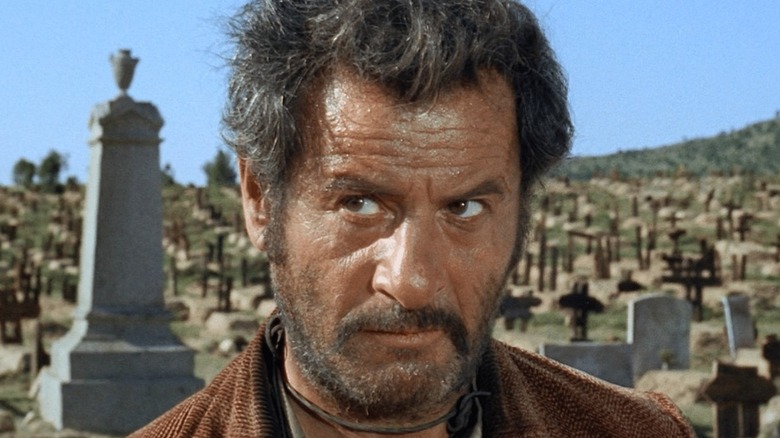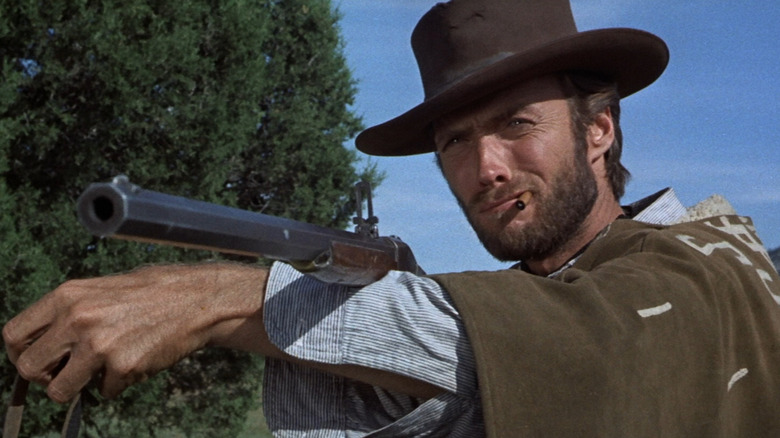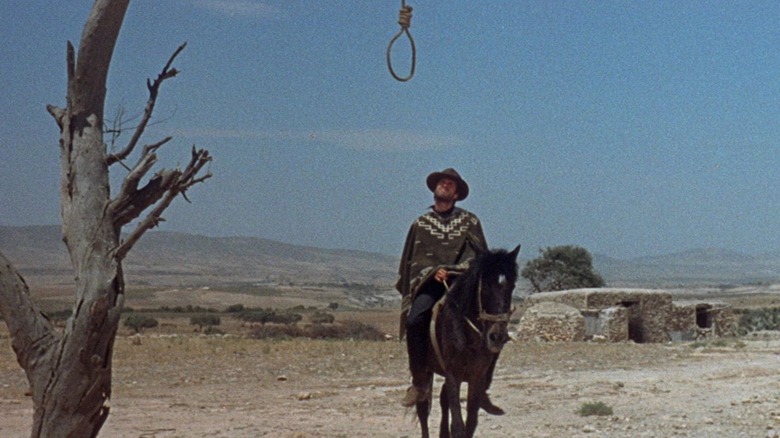The Gold Rush of 1849 brought about hundreds of individuals to flee the Jap a part of the USA and head west to hunt simple cash, dug up out of the bottom. Lots of the lands People had been infiltrating weren’t being overseen by any form of widely known legislation, and the boomtowns that unexpectedly fashioned form of needed to make up their infrastructure as they went alongside. An entire new world fashioned: the Wild West.
American writers of fiction had been telling tales of the “Nice American Frontier” as early because the 1820s (some bibliophiles could also be acquainted with the works of James Fenimore Cooper), however the Western literary style started to blow up within the late 1850s and 1860s. Pulp novels started to proliferate throughout the nation, and the “penny dreadfuls” invented plenty of the icons and trappings we see in Westerns to this present day: gunslingers, bounty hunters, lawmen, and so forth. Actual-life figures usually grew to become fictionalized — and made legendary — by these trashy books. Lots of the tales from stated Westerns additionally made their solution to the stage in touring gunslinging exhibits.
A few of the earliest films drew from pulp Western traditions, and the style made a cheerful marriage with the brand new medium. One of many earliest Westerns, the 90-second brief “Annie Oakley,” was launched in 1894. For a number of many years, Westerns had been the ascendant style all through Hollywood, as filmmakers might haul digital camera gear out to the deserts of California and shoot on a budget. They had been mythic and cheap on the similar time.
By the late 1950s, Westerns were finally starting to wane in popularity in the USA, however by then, a brand new era of filmmakers grew up being influenced by them. Specifically, a number of Italian administrators latched onto the style, and reinterpreted them in a brand new, markedly Italian type. The brand new Italian Westerns from the Sixties had been referred to as “Spaghetti Westerns,” named after the well-known Italian pasta.
Who coined the time period ‘Spaghetti Western?’
So, no, for individuals who have at all times been a bit baffled by the time period, “Spaghetti Westerns” include no scenes of characters consuming spaghetti. The time period was merely taking a stereotype about Italian individuals — that they’ve plenty of spaghetti of their diets — and making use of it to the movies made by Italian administrators.
The earliest and most well-known Spaghetti Westerns had been helmed by Sergio Leone, who directed “A Fistful of {Dollars}” in 1964. Starring Clint Eastwood within the lead function, the film was a shameless ripoff of Akira Kurosawa’s samurai film “Yojimbo,” and the Japanese director really took Leone to courtroom over the matter (Kurosawa received). “A Fistful of {Dollars}” was a worldwide hit, nevertheless, and it birthed a brand new wave of Westerns for the higher a part of a decade. Leone himself would flip “Fistful” into an unofficial trilogy with the Eastwood-starring follow-ups “For a Few {Dollars} Extra” in 1965 and “The Good, the Dangerous, and the Ugly” in 1966. Leone additionally helmed the epic “As soon as Upon a Time within the West” in 1968, and the amusingly titled “Duck, You Sucker!” in 1971.
In accordance with some particular options on the “Fistful of {Dollars}” Blu-ray, the time period “Spaghetti Western” was invented by a Spanish movie critic named Alfonso Sánchez, who playfully paired the title of Italian delicacies with a rising movie pattern. The time period caught, and we have been utilizing it ever since. It needs to be famous that many Italian movie administrators disliked the time period, feeling it reductive and a bit offensive.
Many notable Italian Westerns had been made by way of Cinecittà Studios, based mostly out of Rome, however movies known as Spaghetti Westerns had been shot throughout Europe, together with in Spain and Greece, and had been funded by numerous worldwide studios. Many had been shot within the Almería and Tabernas deserts of Spain. So, not the whole lot People check with as a Spaghetti Western is essentially Italian.
What are the hallmarks of a Spaghetti Western?
What does it imply to be a Spaghetti Western? As dictated by Leone’s aesthetic decisions with “A Fistful of {Dollars},” Spaghetti Westerns are heightened, extra stylized variations of Nineteen Forties American Westerns. The colours are typically extra saturated, and the enhancing sooner. The digital camera angles are both expansively vast, or proper up a gunslinger’s nostril. The actors are made into caricatures of Western archetypes. As one can see from Clint Eastwood’s efficiency in Leone’s films, the heroes tended to be taciturn antiheroes. There aren’t conventional “white hats” in Spaghetti Westerns, because the protagonists aren’t wholly good individuals. When it comes to their dour spirit, Spaghetti Westerns have extra in frequent with Movie Noir than with conventional American Westerns.
Audiences additionally preferred Spaghetti Westerns due to their violence. The Hays Code — established within the Thirties — was turning into more and more moribund, and European administrators, who had been by no means beholden to the code within the first place, lastly began ignoring it in earnest. Abruptly, deaths had been way more painful, brutal, and dramatic.
The trimmings and aesthetics of Spaghetti Westerns proliferated broadly all through the Sixties and Nineteen Seventies, successfully dismantling the outdated tropes of pre-Nineteen Fifties Westerns totally. Different notable movies within the style embrace Sergio Corbucci’s 1966 movie “Django” starring Franco Nero. “Django” spawned many sequels and rip-offs, a few of which additionally starred Nero. A few of the Italian Westerns had enjoyable titles, like 1966’s “At the moment We Kill… Tomorrow We Die!,” 1965’s “Blood for a Silver Greenback,” 1967’s “Dying Rides a Horse,” and the identical yr’s “God Forgives… I Do not!”
The Spaghetti Western additionally started to wane in reputation finally, and died out within the late ’70s or early ’80s. No pattern can final eternally.
In case you could not inform, some trendy administrators love Spaghetti Westerns, and have re-upped their attitudes and aesthetics for a contemporary viewers. Takashi Miike make “Sukiyaki Western Django” in 2007, and Quentin Tarantino made “Django Unchained” in 2012. The spirit of violence, we will see, fortunately lives on.
The Gold Rush of 1849 brought about hundreds of individuals to flee the Jap a part of the USA and head west to hunt simple cash, dug up out of the bottom. Lots of the lands People had been infiltrating weren’t being overseen by any form of widely known legislation, and the boomtowns that unexpectedly fashioned form of needed to make up their infrastructure as they went alongside. An entire new world fashioned: the Wild West.
American writers of fiction had been telling tales of the “Nice American Frontier” as early because the 1820s (some bibliophiles could also be acquainted with the works of James Fenimore Cooper), however the Western literary style started to blow up within the late 1850s and 1860s. Pulp novels started to proliferate throughout the nation, and the “penny dreadfuls” invented plenty of the icons and trappings we see in Westerns to this present day: gunslingers, bounty hunters, lawmen, and so forth. Actual-life figures usually grew to become fictionalized — and made legendary — by these trashy books. Lots of the tales from stated Westerns additionally made their solution to the stage in touring gunslinging exhibits.
A few of the earliest films drew from pulp Western traditions, and the style made a cheerful marriage with the brand new medium. One of many earliest Westerns, the 90-second brief “Annie Oakley,” was launched in 1894. For a number of many years, Westerns had been the ascendant style all through Hollywood, as filmmakers might haul digital camera gear out to the deserts of California and shoot on a budget. They had been mythic and cheap on the similar time.
By the late 1950s, Westerns were finally starting to wane in popularity in the USA, however by then, a brand new era of filmmakers grew up being influenced by them. Specifically, a number of Italian administrators latched onto the style, and reinterpreted them in a brand new, markedly Italian type. The brand new Italian Westerns from the Sixties had been referred to as “Spaghetti Westerns,” named after the well-known Italian pasta.
Who coined the time period ‘Spaghetti Western?’
So, no, for individuals who have at all times been a bit baffled by the time period, “Spaghetti Westerns” include no scenes of characters consuming spaghetti. The time period was merely taking a stereotype about Italian individuals — that they’ve plenty of spaghetti of their diets — and making use of it to the movies made by Italian administrators.
The earliest and most well-known Spaghetti Westerns had been helmed by Sergio Leone, who directed “A Fistful of {Dollars}” in 1964. Starring Clint Eastwood within the lead function, the film was a shameless ripoff of Akira Kurosawa’s samurai film “Yojimbo,” and the Japanese director really took Leone to courtroom over the matter (Kurosawa received). “A Fistful of {Dollars}” was a worldwide hit, nevertheless, and it birthed a brand new wave of Westerns for the higher a part of a decade. Leone himself would flip “Fistful” into an unofficial trilogy with the Eastwood-starring follow-ups “For a Few {Dollars} Extra” in 1965 and “The Good, the Dangerous, and the Ugly” in 1966. Leone additionally helmed the epic “As soon as Upon a Time within the West” in 1968, and the amusingly titled “Duck, You Sucker!” in 1971.
In accordance with some particular options on the “Fistful of {Dollars}” Blu-ray, the time period “Spaghetti Western” was invented by a Spanish movie critic named Alfonso Sánchez, who playfully paired the title of Italian delicacies with a rising movie pattern. The time period caught, and we have been utilizing it ever since. It needs to be famous that many Italian movie administrators disliked the time period, feeling it reductive and a bit offensive.
Many notable Italian Westerns had been made by way of Cinecittà Studios, based mostly out of Rome, however movies known as Spaghetti Westerns had been shot throughout Europe, together with in Spain and Greece, and had been funded by numerous worldwide studios. Many had been shot within the Almería and Tabernas deserts of Spain. So, not the whole lot People check with as a Spaghetti Western is essentially Italian.
What are the hallmarks of a Spaghetti Western?
What does it imply to be a Spaghetti Western? As dictated by Leone’s aesthetic decisions with “A Fistful of {Dollars},” Spaghetti Westerns are heightened, extra stylized variations of Nineteen Forties American Westerns. The colours are typically extra saturated, and the enhancing sooner. The digital camera angles are both expansively vast, or proper up a gunslinger’s nostril. The actors are made into caricatures of Western archetypes. As one can see from Clint Eastwood’s efficiency in Leone’s films, the heroes tended to be taciturn antiheroes. There aren’t conventional “white hats” in Spaghetti Westerns, because the protagonists aren’t wholly good individuals. When it comes to their dour spirit, Spaghetti Westerns have extra in frequent with Movie Noir than with conventional American Westerns.
Audiences additionally preferred Spaghetti Westerns due to their violence. The Hays Code — established within the Thirties — was turning into more and more moribund, and European administrators, who had been by no means beholden to the code within the first place, lastly began ignoring it in earnest. Abruptly, deaths had been way more painful, brutal, and dramatic.
The trimmings and aesthetics of Spaghetti Westerns proliferated broadly all through the Sixties and Nineteen Seventies, successfully dismantling the outdated tropes of pre-Nineteen Fifties Westerns totally. Different notable movies within the style embrace Sergio Corbucci’s 1966 movie “Django” starring Franco Nero. “Django” spawned many sequels and rip-offs, a few of which additionally starred Nero. A few of the Italian Westerns had enjoyable titles, like 1966’s “At the moment We Kill… Tomorrow We Die!,” 1965’s “Blood for a Silver Greenback,” 1967’s “Dying Rides a Horse,” and the identical yr’s “God Forgives… I Do not!”
The Spaghetti Western additionally started to wane in reputation finally, and died out within the late ’70s or early ’80s. No pattern can final eternally.
In case you could not inform, some trendy administrators love Spaghetti Westerns, and have re-upped their attitudes and aesthetics for a contemporary viewers. Takashi Miike make “Sukiyaki Western Django” in 2007, and Quentin Tarantino made “Django Unchained” in 2012. The spirit of violence, we will see, fortunately lives on.




















